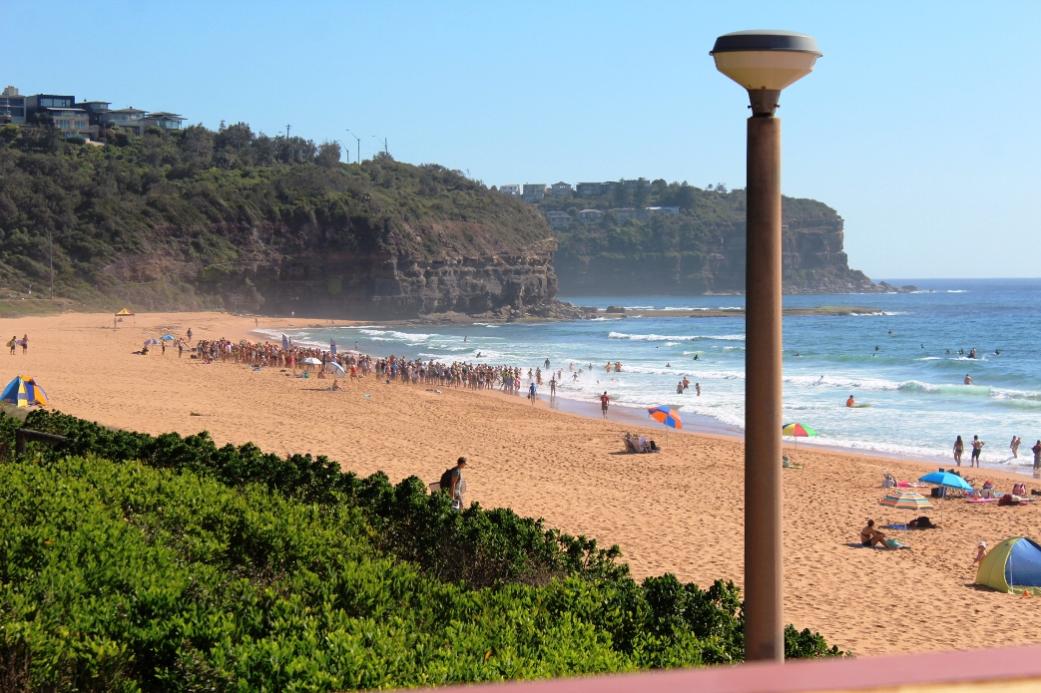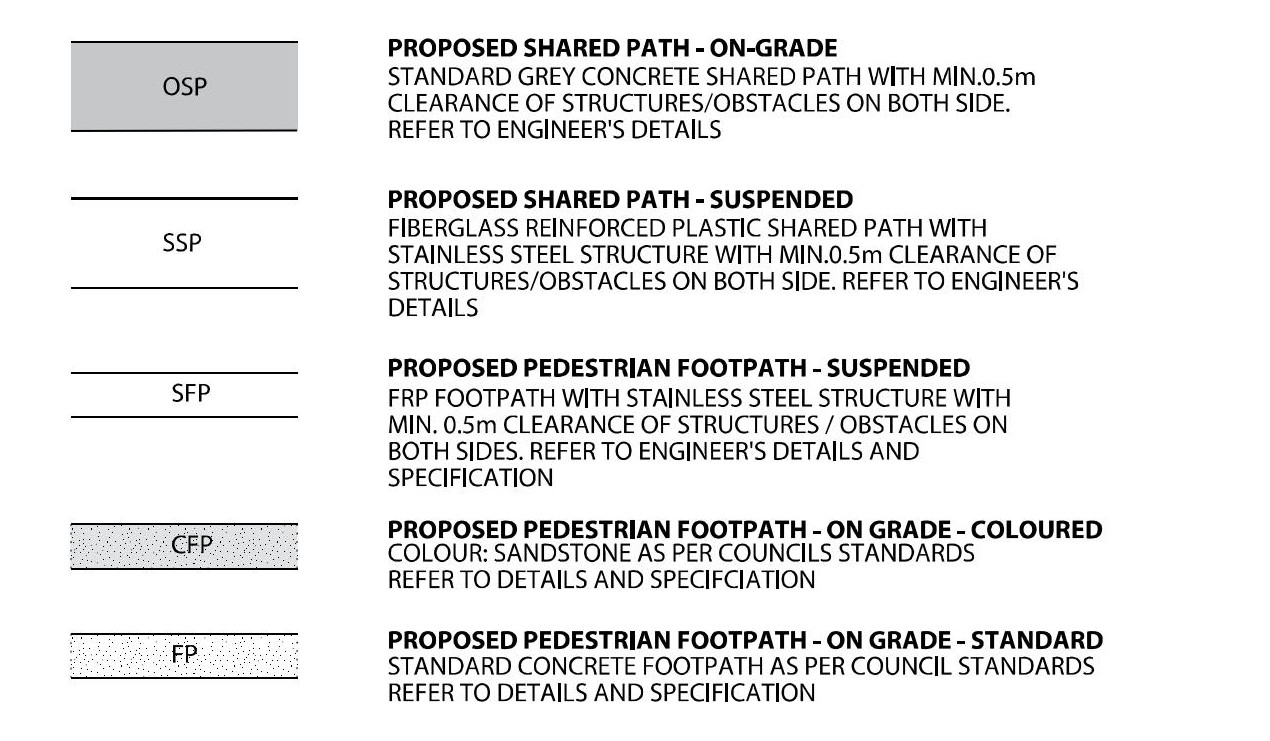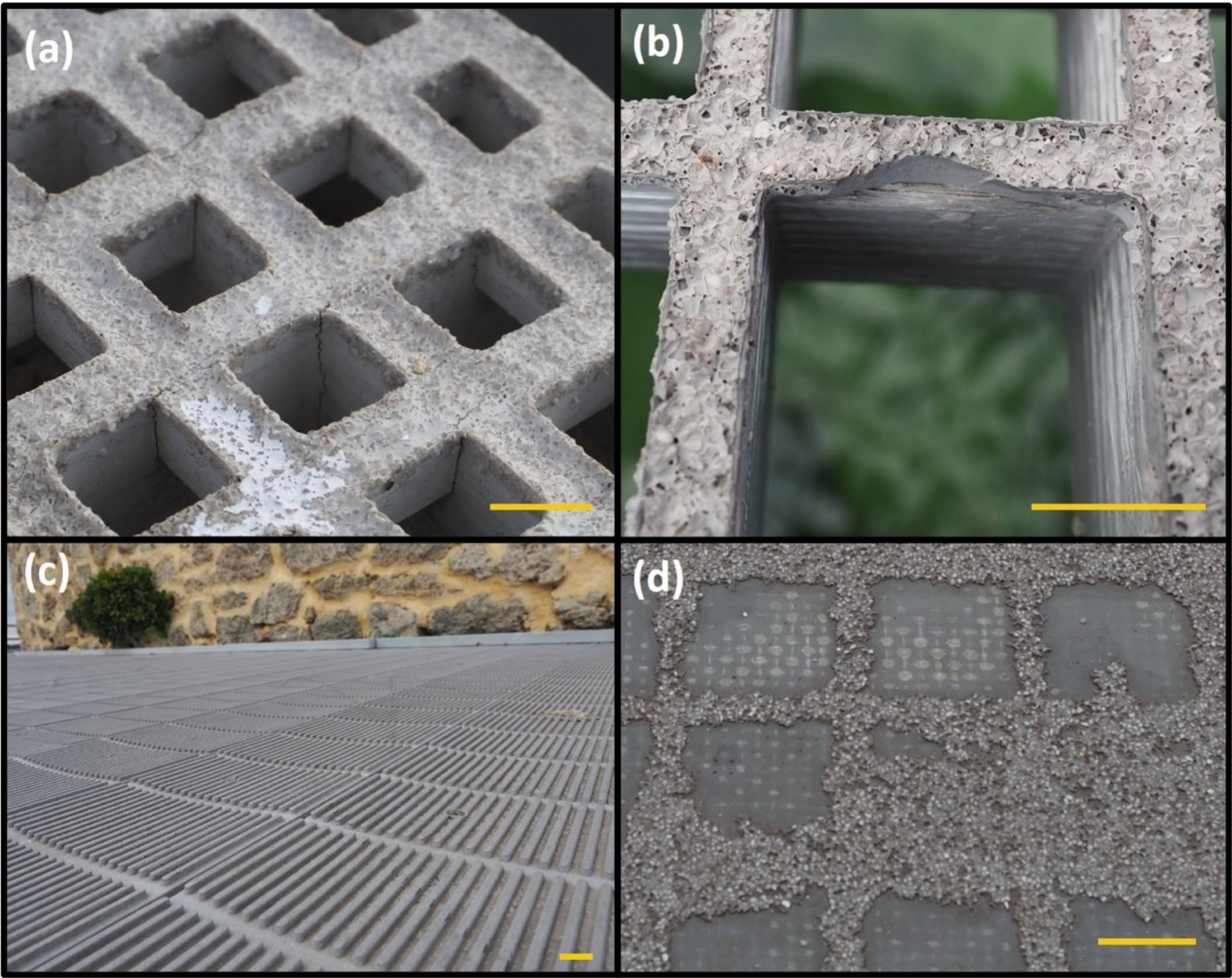Community Concerned Over the Increase of Plastic Products Being Used by the Northern Beaches Council for Installations in Pittwater's Environment

Pittwater residents have become increasingly concerned by the installation of products made from plastic in the environment.
News an elevated plastic boardwalk will be installed on the Newport to Bilgola pathway, along with an update to the Avalon Place plan stating plastic grass will be laid under gym equipment in Dunbar park, has sparked those concerns.
Residents want to know if the Northern Beaches Council has a default policy wherein its first resort is to install these products, even when they are not recommended for marine environments or areas known to flood due to being part of wetlands or creek thoroughfares.
In some cases the community had not been consulted prior to their installation, they have simply appeared. Neither have Plans of Management been updated to reflect these materials in place alongside creeks or in floodplains – plastic turf installed in Lynne Czinner Park, a reserve named for a fierce and lifelong environmentalist, being one instance.
Residents had already expressed dismay at the amount of vegetation and trees removed for the Newport to Bilgola shared path once they saw the scale of what had been razed. Now they are asking why a walkway similar to that installed in national parks – boards with a chicken wire over them for grip – has not been the council’s first choice.
The council has pointed out this week that the first page of their 2018 consultation draft plan for the Newport to Bilgola walkway did reference FRP being used for an elevated section of the path.
Section from Page 1 of the council's 2018 draft plan:

Council's webpage on the history for this project states;
''The community feedback collected during public consultation of Section 1 between 23 October and 6 December 2020 revealed a general level of support for the proposed shared-user path, with comments citing the anticipated benefits of improved access and safety.
There were some clear and consistent themes evident from respondents regarding the use of proposed materials. In particular, the proposed use of concrete barriers and the negative impacts this could have on the environment, aesthetics of the area and driver experience.
We received a strong level of support to improve the draft design with opportunities to integrate the new path with the surrounding environment specifically highlighted. The detailed design will be adjusted based on this community feedback.
On 12 November 2024, Council approved the next step - detailed design and construction of the shared-user path connecting Newport Beach to The Serpentine in Bilgola Beach. A Review of Environmental Factors has been completed to assess and mitigate potential environmental impacts.'' From: https://yoursay.northernbeaches.nsw.gov.au/ConnectingNorthernBeaches/connecting-northern-beaches-coast-walk-project-history
However, the council's documents have no record of objections to a plastic boardwalk being placed in the north Newport to Bilgola headland.
One councillor representing Pittwater was unaware they were voting at that November 2024 for the use of this product in that environment - other councillors, representing Pittwater, did not respond at all.
FRP, or Fibre Reinforced Polymer (also called Fibre Reinforced Plastic), is a composite material made of fibres, namely glass fibres, and secondly of a plastic matrix surrounding the glass fibres. This matrix consists of either thermosets or thermoplastic material.
A council spokesperson stated, in response to the objections on the choice of material coming into the news service that:
‘’FRP is commonly used in boardwalk and elevated walkway construction due to its durability and non-slip properties. It has been used in other recent significant projects such as the Manly Dam boardwalk, Narrabeen pedestrian and cycle bridge and the boardwalk at Brick Pit Reserve.
The concept plans also showed a combination of on ground and suspended shared path due to the topography of this area. (See the Newport to Avalon Pedestrian and Cycle Link – Detailed concept designs).
The consultation history and original concept plans are available for viewing on the YourSay page which details the background of the project and houses the original plans. ‘’
There were objections to the use of tis product at Manly Dam. Narrabeen pedestrian and cycle bridge's drawings do not clearly state plastics were to be used there.
Recent studies into the use of FRP, including a Western Australian one focussed specifically on marine environments, show this product begins breaking down as it is being installed and continues to shed microplastics into the environment as long as it is in place.
The product cannot be recycled, adding to the cost on the environment and ratepayers, and the next generation, over the long-term (1).
Shared Paths are not Bike Lanes
Dedicated cyclists have also expressed concerns about the ‘shared path’ element of this 3 metres wide track over the Newport-Bilgola headland, stating there is a vast difference between a dedicated bike lane and a shared path – one is a great way for people to cycle around their city, the other creates conflicts and even puts others at danger when an inevitable conflict between pedestrians and those moving at speed on bikes collide.
Dedicated bike lanes offer more physical separation from other traffic, whereas shared paths require users to coexist and navigate the space together.
Narrabeen residents - cyclists and pedestrians - have had ongoing conflicts over who has 'right of way' on the track around the western part of the lagoon.
The Devil in the Details
In the instance of plastic turf in Dunbar park, a floodplain for local creeks during rain events and specifically exactly where the council wants to put in some gym equipment for everyone, only the second draft drawing showed plastic turf logo, but did not exactly and openly state, the intention to install plastic grass in this park.
The updated council webpage for this project states
''Coming soon: Outdoor fitness equipment
We asked for your feedback on improvements to Dunbar Park, and received strong support for creating an active recreation space and installing outdoor fitness equipment.
The fitness equipment will be installed near the Avalon Recreation Centre Annexe (see the plan for the active recreation space below).
Work will begin in September, and we anticipate completion by mid-October, weather permitting.''
In the council webpage for this project it does state; ‘’Design concepts follow our public space design guidelines - you can read Public Space Vision and Design Guidelines - Northern Beaches for more information’’.
The 'Public Space Vision and Design Guidelines' document is littered to references to make everything the council does ‘cost-effective’ – or affordable in other words - and although it does not specifically state it will use and install plastic products as the default or first resort, these products are listed in each component the document covers.
However, it illustrates the council is tasked with providing a huge amount of projects and infrastructure, as well as maintaining these, over a large area, and is legally required, in some places - children's playgrounds for example - to install products which will ensure a child falling from a swing falls onto something soft - which is why we see rubberised 'soft-fall' instead of sand and other natural products being installed - and despite growing evidence this plastic/rubber product is not safe for children and sheds pollutants and microplastics into the environment as long as it, too, is in place.
Cr. Miranda Korzy, after being informed of community sentiment about the announced plastic turf for Dunbar park, stated:
“I was disappointed to see so-called synthetic turf - which is really plastic grass - proposed to be laid underneath outdoor gym equipment in Dunbar Park.
“Given that this area was originally a creek thoroughfare and part of wetlands, and that it goes underwater in heavy rain, I’ve asked staff to review this plan and they have agreed to do so.”
Agreeing to review of a plan to install plastic grass in an old creek bed is not a decision to not plan to do this in the first place though, or confirmation this will not still occur in that exact spot.
The NSW Government released its New guidelines on synthetic turf use in sports fields on May 21 2025.
The Guidelines for Division 5.1 Assessments Addendum for Synthetic Sports Field will come into effect from 25 August 2025, providing the Department time to ensure stakeholders understand the intent of the document and how to apply it to their work adequately.
That document states:
'Chemical and compound leachate and particles from synthetic turf materials and plastics as well as pesticides and fungicides used for maintaining the surface are likely to pollute and contaminate local and surrounding waterways, soils and air as they travel through the environment. However, the highest risk of pollution is during installation and when it is first installed.
Plastic migration from synthetic turf sports fields, particularly into waterways and bushland, is a key concern. There is evidence that both rubber infill and turf fibre blades from synthetic turf fields are found in waterways in NSW. It has been estimated that a synthetic turf field without structures to reduce infill loss will wash tens to hundreds of kilograms of infill per year into stormwater systems or waterways. The amount of turf fibres lost from a synthetic turf field is likely to be in the hundred’s of kilograms per year, with the amount increasing for fields near the end-of-life or poorly maintained.
International studies have also found a large difference between the amount of microplastics shed from different types of synthetic turf with weathering and UV exposure.'
Although the NSW Government released its guidelines on the use of plastic products in the environment document in May 2025, discussions in this local government area on residents expectations of where these products should and should not be used have not taken place.
Does the policy, since this exists in some form, need to be clearer? Rather than blaming those administrating this, should it be stated outright the default or first-choice for these sensitive environments is to be plastic – plastic grass, plastic walkways, plastic steps – under this council - and that if the community of now, and the future, is opposed to this, why is it being installed where it should not be?
''If we’re to pay so much more in rates, permanently, why isn’t it being invested in the best for the environment of now and the environment of the future – like that adage of investing in a really good coat because it will last a lifetime, not just a score of years.'' another resident has stated this past week
Pittwater councillor Korzy moved a motion at the July council meeting calling for a review of the use of plastics in council infrastructure. The motion also called for a report on alternatives to plastics.
''I included a list of items such as boardwalks, plastic sheaths on wharf posts, geo-tex sandbags, roads, speed bumps on roads, signage, building materials such as external cladding, fences, gates, furniture and stormwater infrastructure.'' Ms Korzy said
''Unfortunately, another councillor moved an amendment to remove this list, which was supported by all councillors excepted the Greens. The review will therefore go ahead but staff will not be obliged to identify the plastics in the elements that were on my list.''
However, the amount of extremely irate emails that have come into the news service over the past week would indicate the council is missing an opportunity to do better than 'sufficient' and chosen quantity over quality.
Someone, including those living here right now, will be picking up the tab in health impacts, a degraded environment, and remediation and disposal costs.
Highlights
- Plastic infrastructure is prevalent around the SCE, particularly decking on jetties.
- Surface degradation was evident at all sites.
- Various factors likely influence severity of degradation in estuarine systems.
- Suitability of plastic infrastructure in estuaries requires further investigation.
Abstract
The degradation of plastic infrastructure installed along estuaries and coastal environments may constitute a significant source of plastic contamination. This study aimed to determine the prevalence of plastic infrastructure and the extent of surface degradation of these plastics in a case study system, the Swan and Canning Estuary, Western Australia. The severity of cracks, chips, deformation, and material loss were used to estimate a novel degradation index for the plastic components on structures. The most common plastic infrastructure was decking on jetties, predominantly fibre reinforced (70 %) and co-polymer recycled (20 %) plastics. Degradation was evident at every site and varied across structures and plastic materials. The severity of degradation was likely influenced by a range of complex interacting factors such as structure age, and wet-dry cycling, alkalinity, and high temperatures that are characteristic of estuarine environments and known to exacerbate degradation of plastic materials. This study revealed plastic infrastructure was common in the case study system, structures start degrading during installation and may constitute a significant, and hitherto undocumented, source of plastic to these environments.
The durability of plastics, purported resistance to degradation and lower installation costs (relative to some materials) means they are often recommended over traditional materials (e.g. timber, metal and concrete) for infrastructure applications. In estuarine and coastal environments plastic is used widely for shoreline infrastructure that frequently interacts with water such as decking, walkways, pontoons, boat pen and jetty chafer posts, pile sleeves and capping, and fenders, among other uses. Shoreline infrastructure is subject to a range of degradation factors that may challenge the durability, and therefore, longevity of plastic. Laboratory testing of a commonly used plastic in shoreline infrastructure, fibre reinforced plastic (FRP), showed susceptibility to increased degradation under high ambient air temperature (>40 °C) (Wu et al., 2023), frequent wetting and drying cycles (Aiello and Ombres, 2000; Wu et al., 2023), ultraviolet (UV) radiation (Cai et al., 2018; Dong and Wu, 2019; Sasaki and Nishizaki, 2012; Zhao et al., 2017) and alkalinity (i.e. high pH rather than total alkalinity) (Bazli et al., 2016). Furthermore, abrasion and wear from foot traffic can be a significant factor in the degradation of these structures (Sabry et al., 2022; Talib et al., 2021), with the degree of severity depending on the polymer type (including fibre reinforcement), and location of infrastructure (e.g. sandy shorelines). The ongoing use of plastic in shoreline infrastructure may represent a significant source of contamination to the environment and a legacy issue for decades to come, yet there is limited understanding of the degradation and potential shedding of plastic from these structures.
This study aims to document plastic infrastructure in estuarine environments as a potential source of plastic contamination by assessing the extent of plastic use and prevalence of surface degradation, and plastic shedding in a case study system, the Swan Canning Estuary (hereafter SCE) in Western Australia (WA).
.....
To conclude, the surface of plastic shoreline infrastructure installed in estuarine environments starts degrading shortly after installation. This study did not assess structural integrity of plastic infrastructure, and therefore, they may still meet the 20–25 year structural lifespan often promoted by manufacturers. However, these structures start to shed plastic material through surface degradation far earlier than this intended lifespan. Once plastic shoreline infrastructure starts degrading and shedding plastics, it continues to do so throughout the lifespan of the product, therefore, constituting a constant source of plastic to sensitive environments for decades. In contrast to natural products, such as untreated timber, where the loss of material constitutes negligible environmental risks, contamination from plastic is known to cause long-term environmental harm (Andrady, 2011). The susceptibility of plastic infrastructure to a range of degradation factors that are inherent in the SCE and estuarine environments globally, or resulting from installation and purpose-built structures that absorb impact, would suggest they are currently unsuitable for these applications, particularly when environmental risk management is a key priority. Furthermore, the use of plastic infrastructure creates another waste stream of plastic material that will need to be resolved in the future. This work constitutes a baseline of plastic shoreline infrastructure prevalence in an estuarine environment and introduces and recognises, for the first time, these materials as another potentially significant source of plastic contamination to estuarine and coastal environments. Future investigations of differing plastic infrastructure across various environments would be beneficial in elucidating potential factors influencing degradation of such materials in these environments and provide further information on their suitability for installation in comparable circumstances. This study also intends to inform management about the potential environmental risk from contamination arising from plastic shoreline infrastructure whilst informing policy development relating to its use and ongoing monitoring.

Fig. 3. Examples of each degradation criteria (a – cracking of micro/mini mesh fibre reinforced plastic, FRP); b – chipping of FRP with standard grating; c – deformation of recycled co-polymer; d – material loss on solid top FRP used for rapid visual condition assessments. Orange scale bars represent 1 cm.
The green green walls of the Avalon Annexe, despite no rain, alongside where the plastic grass won't grow
sandbags in geo-tex at a Palm Beach on the beach stormwater drain in July 2024 - these are still in this same spot at present, 13 months later, although disintegrating further and washing out so sea